Lecture 11
03/27/2023, M.
Today
Electric conductivity
Boltzmann transport theory
Reading
Girvin & Yang ch. 8
Girvin & Yang ch. 10.2-10.3
1. Boltzmann transport
In the relaxation time approximation (弛豫时间近似)
Isotropic case, the longitudinal conductivity
This is recovers the Drude's law, with a little subtlety. In the Drude's law, the relaxation time should be
The anomalous Hall effect
Let's verify Eq.
We obtain the conductivity
which differs from the Drude formula:
Alternatively,
where the mean free path (平均自由程) is defined as
The point is that conduction is a Fermi surface property!
we note that the diffusion constant is
and find
This last equation is called the Einstein relation. Thus, if a material is to conduct, we need both
A subtle point: there is heating
how can we pretend we can achieve steady state? The energy gets dissipated in the sample or in external circuit, via inelastic scattering, e.g. electron-phonon scattering. But we usually do not need to specify the details inelastic scattering in our linear-response calculation is that its effect (which gives rise to dissipation) is of order
Back to Boltzmann equation
where
Let
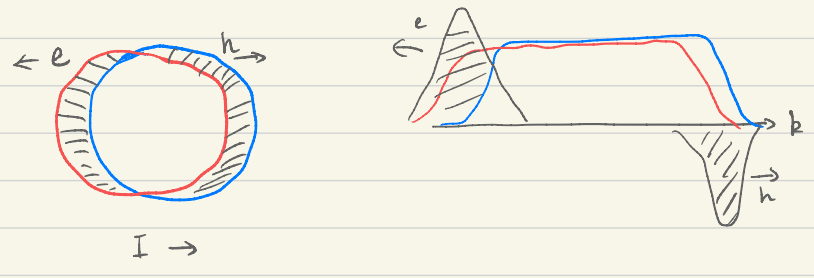
2. Einstein relation
The Einstein relation is quite general, independent of the Boltzmann equation. We now show it is required if an electron system is to achieve equilibrium.
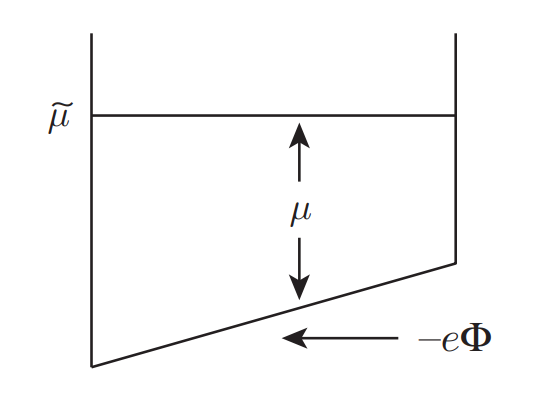
There is an electric current due to the electrochemical potential
and a current due to diffusion
To achieve equilibrium, the should be no measurable flux anywhere. So at every point
we find from
3. Thermal transport
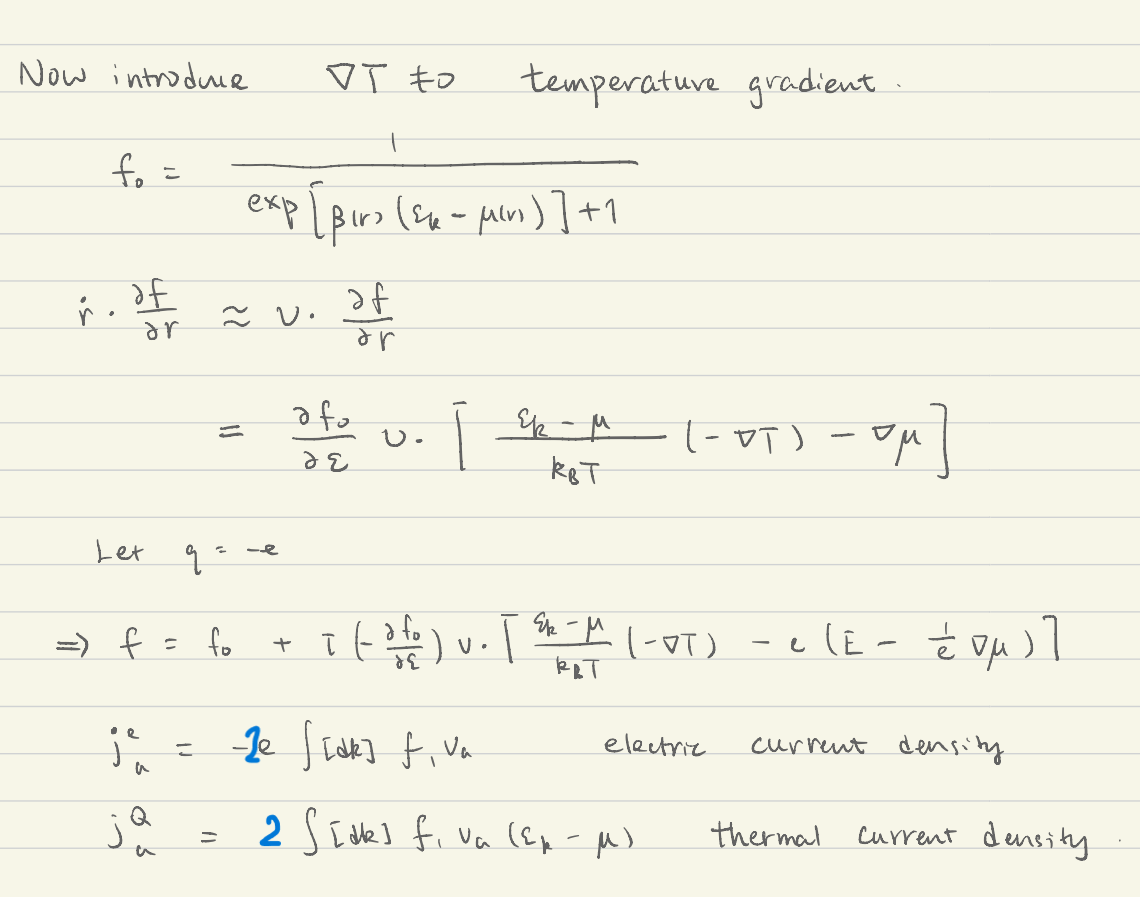
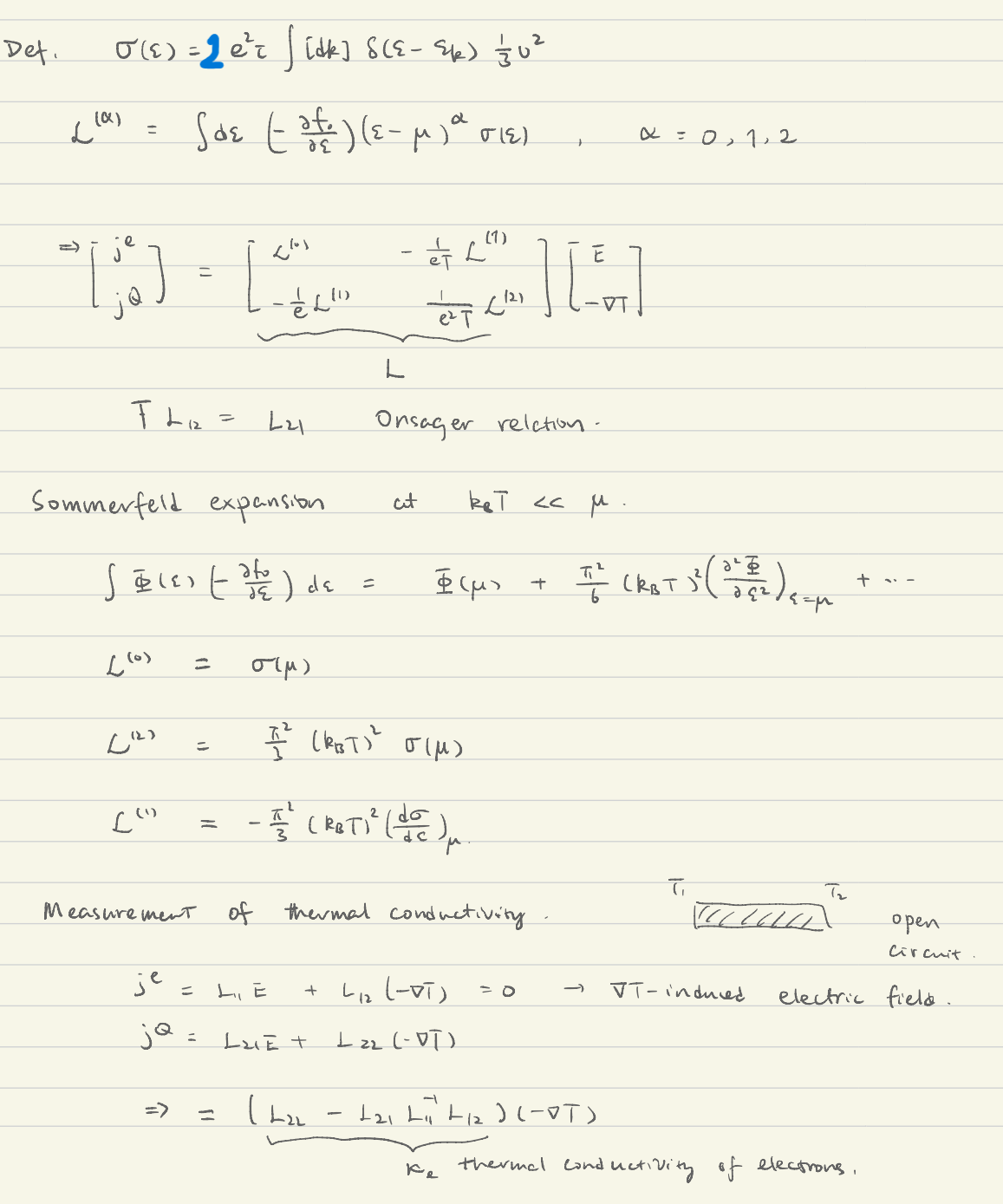
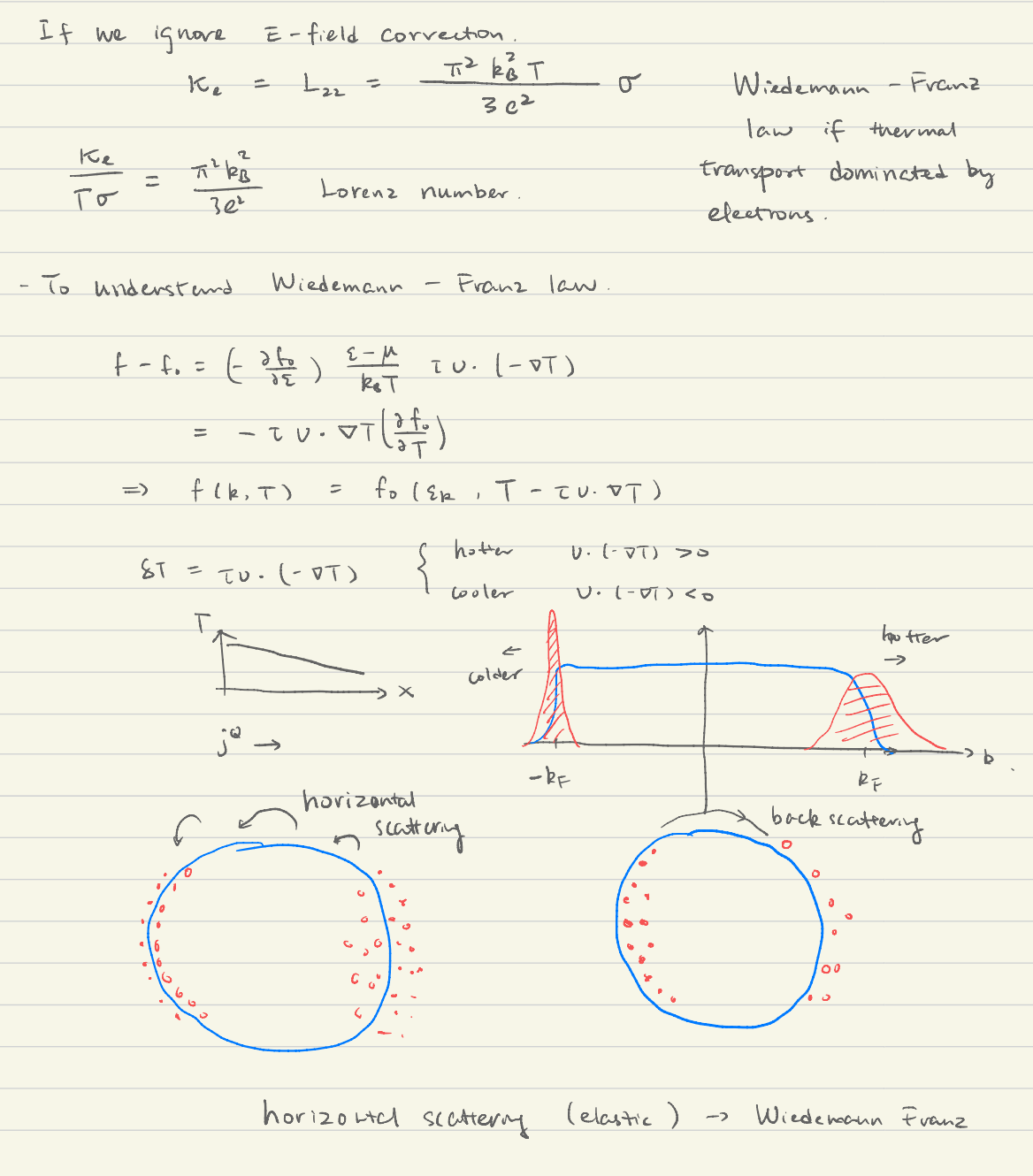
4. Beyond Boltzmann theory
Quantum effects
Shubnikov-de Haas oscillation:
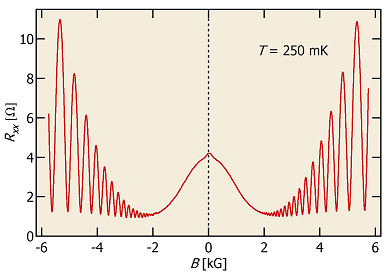
De Haas–Van Alphen effect: the magnetic susceptibility of a pure metal crystal oscillates as the intensity of the magnetic field B is increased
Localization: weak, strong, many-body.